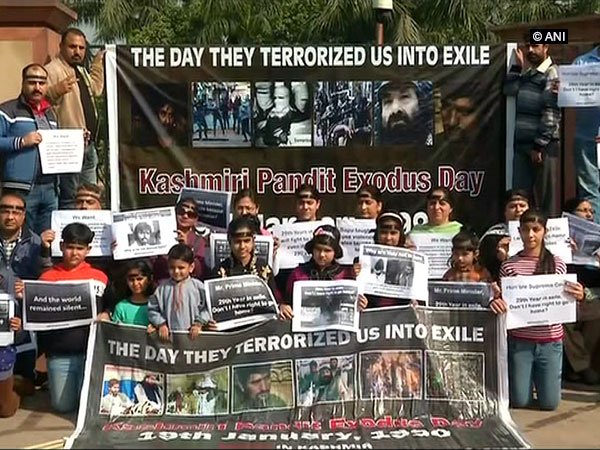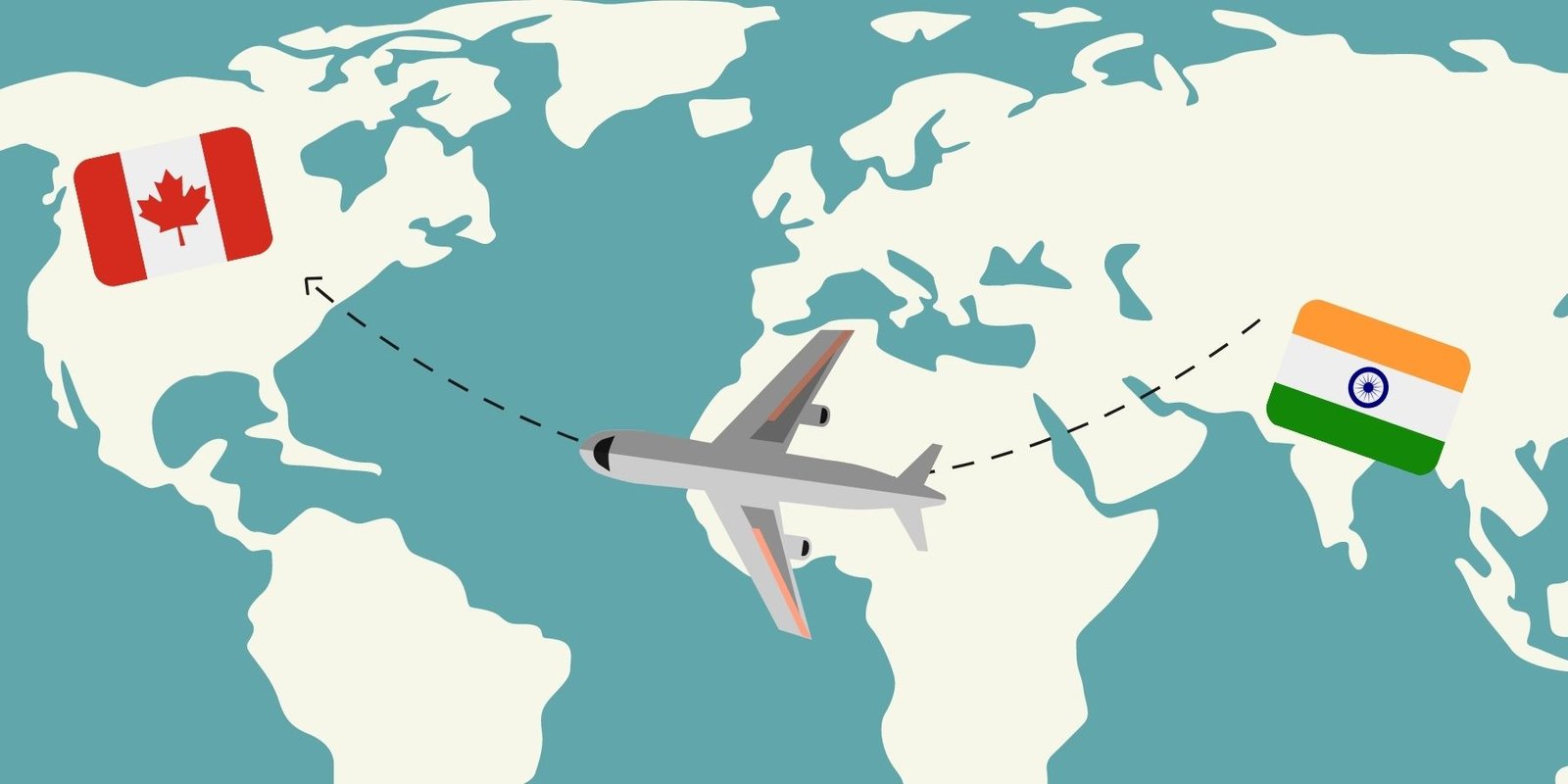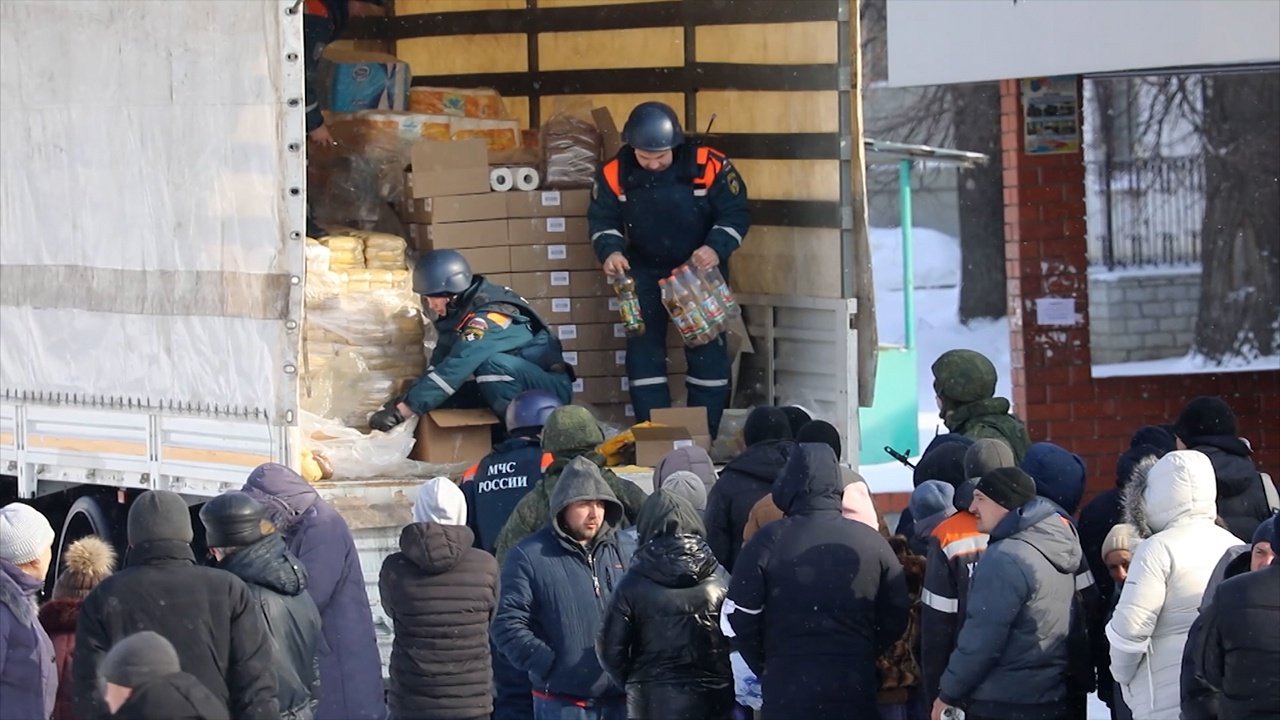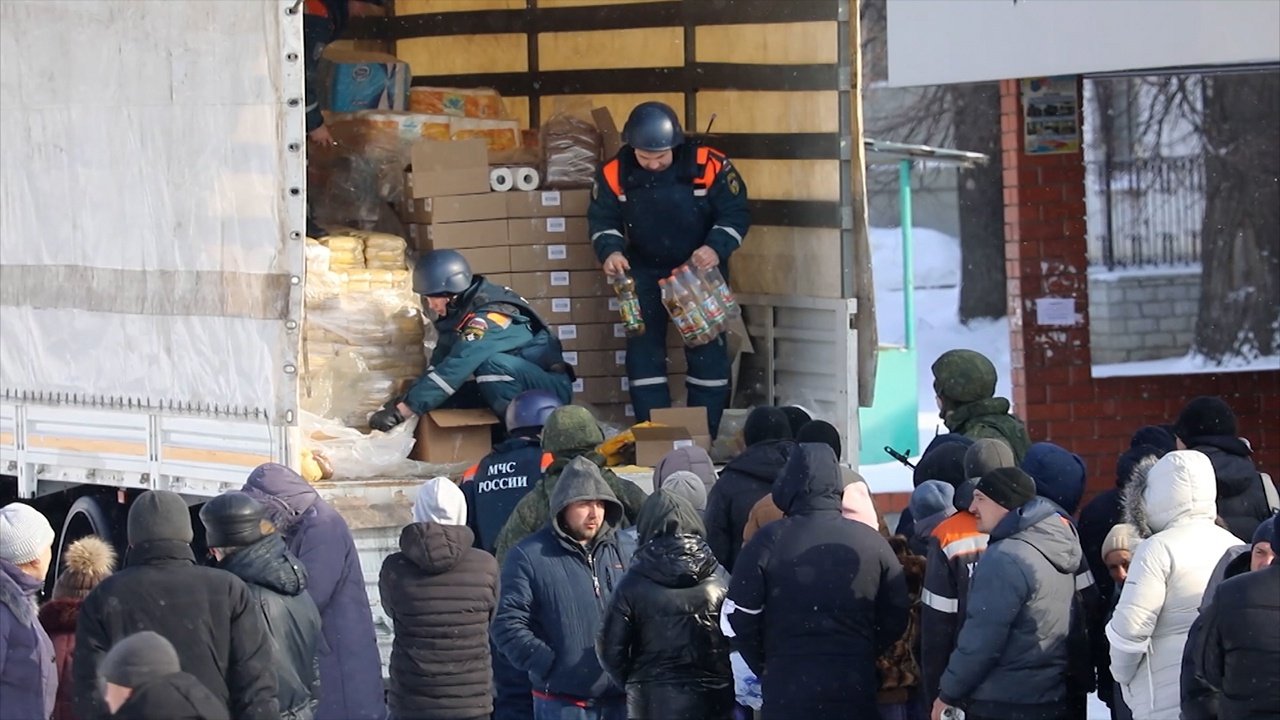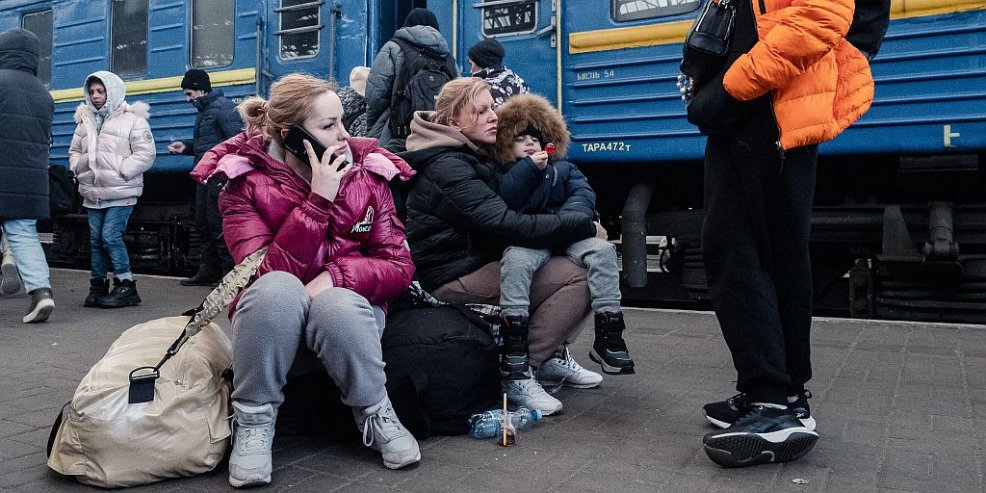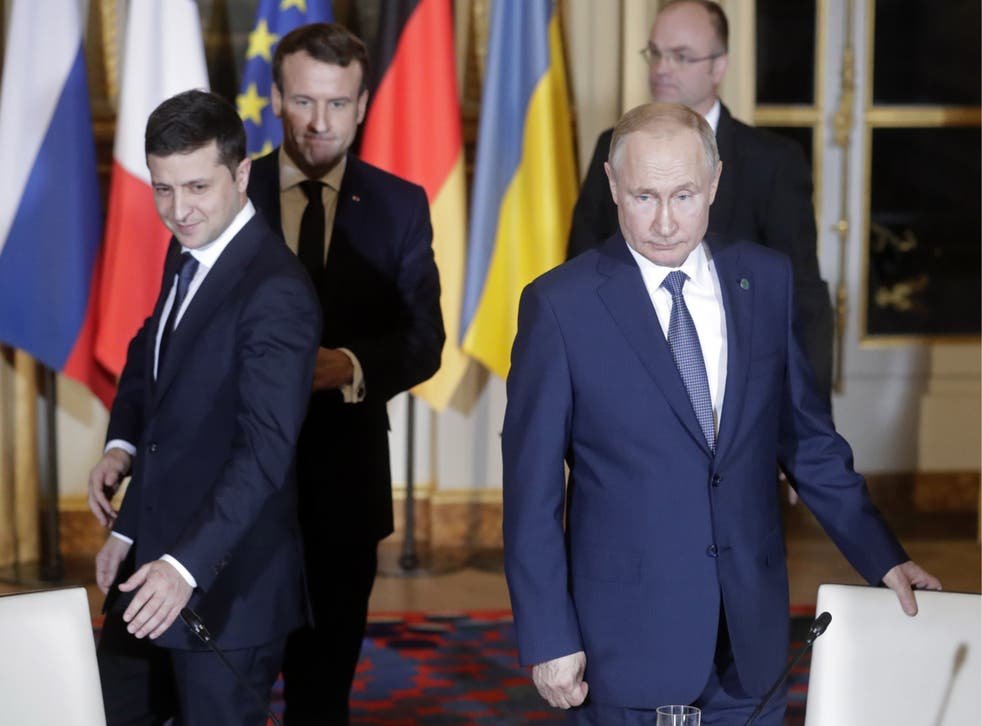Islamist Radical “Terroristan” Pakistan is responsible for Bleeding Kashmir. Kashmir was once a Hindu Land, and for centuries different invaders and rulers plundered this land. The culture of Kashmir became unique with lots of Hindus and soft and moderate form of Islam known as Sufism was followed in Kashmir. However Terrorist Nation Pakistan which was a born enemy of India, had been constantly needling India and bleeding Kashmir. Who is the worst sufferer? Over a Million Kashmiri Pandit Refugees are forced to live the lives of refugees else where in India. Original culture of “Sufism” has been hijacked and destroyed by Pakistan by infiltrating Terrorists for several decades and brainwashing people to become Radical Islamists.
The word Kashmir was derived from the name of the Hindu sage Kashyapa who is believed to have settled people in this land. Accordingly, Kashmir would be derived from either kashyapa-mir (Kashyapa’s Lake) or kashyapa-meru (Kashyapa’s Mountain).
In the first half of the first millennium, the Kashmir region became an important centre of Hinduism and later of Buddhism; later still, in the ninth century, Kashmir Shaivism arose. In 1339, Shah Mir became the first Muslim ruler of Kashmir, inaugurating the Salatin-i-Kashmir or Shah Mir dynasty. Kashmir was part of the Mughal Empire from 1586 to 1751, and thereafter, until 1820, of the Afghan Durrani Empire. That year, the Sikhs, under Ranjit Singh, annexed Kashmir. In 1846, after the Sikh defeat in the First Anglo-Sikh War, and upon the purchase of the region from the British under the Treaty of Amritsar, the Raja of Jammu, Gulab Singh, became the new ruler of Kashmir. The rule of his descendants, under the paramountcy (or tutelage) of the British Crown, lasted until the partition of India in 1947, when the former princely state of the British Indian Empire acceded to India when Maharaja Hari Singh Signed the certificate of Accession.

On 22-October 1947, an impatient Pakistan invaded Kashmir from the north with an army of soldiers and tribesmen militia armed with modern weapons. The tales of the invader’s brutal sackings of towns, and mass killings reached the people of Srinagar soon after and created mass hysteria. Kashmir, without an army, was under serious threat. The intention of Pakistan had been to instill fear into the Kashmiris so they would surrender quickly.


Maharaja Hari Singh sent Sheikh Abdullah as his representative to Delhi to seek India’s help, and in turn signed the Statement of Accession. The next day, five days after the invasion began, Indian troops were flown into the capital Srinagar and fought alongside the local Kashmiris against the invaders, who had reached within a few miles of Srinagar.



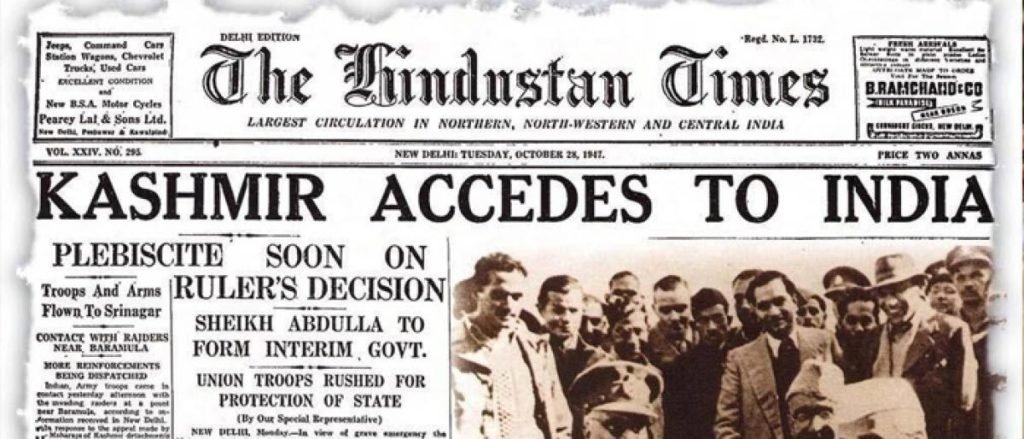



The war was not over until the end of 1948 and left the former Princely State of Jammu and Kashmir split between India and Pakistan (Pakistan later gave a portion of its land to China).
Abdullah explained his reasoning for joining India in 1948 when he declared: “We the people of Jammu and Kashmir, have thrown our lot with Indian people not in the heat of passion or a moment of despair, but by a deliberate choice. The union of our people has been fused by the community of ideals and common sufferings in the cause of freedom”.

He also later reflected that the one million non-Muslims of the State would have no place in Pakistan and as the Kashmiris had always preached secularism their ideological home was India.
Initial Years in the Indian Union
In September 1951 the first ever elections were held for the Constituent Assembly in the state. The National Conference won all 75 seats unopposed. Article 370 of the Indian Constitution was passed in 1952 and was the compromise between the demands of Indian secularism and Muslim sub-nationalism.
But by 1953 Abdullah had become confrontational with his own cabinet and began speaking of revoking the accession and forming an independent Kashmir on several occasions.
In August 1953 Sheikh Abdullah was arrested for having turned corrupt and autocratic.

The 1965 War
Under Bakshi Ghulam Mohammed the state had made great progress by way of new schools, universities, hospitals and roads. In 1964 Bakshi retired as Prime Minister. What then changed was Pakistan. The democratic government was overthrown in 1958 in a military coup and the new leader of Pakistan, General Ayub Khan, secretly pursued Kashmir. To keep public support, the military promised the Pakistani military Kashmir, as well as defense from attacks from India. Pakistan would never give up its claim on all of Kashmir, for as they explained the letter K in Pakistan stood for Kashmir.
In 1965 Pakistan suddenly invaded Kashmir in an attempt to take it by force, leading to a short war in which Pakistan was defeated heavily. The Kashmiri population supported the Indian army and helped repel the Pakistani attack. Capture of Barki was hailed as one of the master set piece battalion attacks. 4 SIKH had 39 killed and 121 wounded. Battle Honour ‘Barki’ and Theatre Honour ‘Punjab’ were awarded to the Unit besides gallantry medals one MVC and three VrCs. Dr S Radhakrishnan, President of India, visited Barki later, had tea with the troops and highly complimented the battalion for its sacrifices and victory.

Following the war, most Kashmiri people had turned strongly anti-Pakistan as they were seen as the aggressors. In 1972, the Simla Agreement stated that India and Pakistan would resolve their differences bilaterally, and not through the United Nations or other third parties.

The Kashmir Accord
The Plebiscite movement had failed to achieve anything, and after the 1971 War in which Pakistan was not only defeated by India but split in half, Abdullah and Kashmir moved closer to India. In 1972, Abdullah announced “our dispute with Government of India is not about accession but is about the quantum of autonomy.”
The 1975 Kashmir Accord, signed by Prime Minister Indira Gandhi and Chief Minister Sheikh Abdullah further strengthened India’s control over legislation in Kashmir (however Article 370 remained).
Kashmir had very much become a part of India by this time. Popular Indian films were shot in the beautiful and picturesque Kashmir locales with its gardens, mountains and lakes providing scenic backdrops. The Indian upper class would venture to Kashmir in the summer for weeks at a time, socializing in the cooler climate of places such as Gulmarg (near Srinagar). So while the Kashmiri people retained their own distinct culture within the mosaic of India, they were a part of India’s multi-cultural ways by the 1970s
In 1977 the State Congress Party withdrew its support of the Abdullah Government, thus ending the National Conference-Congress alliance of the time. In retaliation, two years after signing the Kashmir Accord and thus reaffirming Kashmir as an integral part of India, Abdullah began speaking about a plebiscite and even independence. In 1979, Pakistani Prime Minister Z.A. Bhutto pledged to “fight for a thousand years for the cause of oppressed Kashmiri Muslims.”
The Islamization of Kashmir
In 1980, the Islamization of Kashmir began with full force. The Abdullah Government changed the names of about 2500 villages from their original names to new Islamic names.
For example, the major city of Anantnag was to be known as Islamabad (same name as the Pakistani Capital). The Sheikh began giving communal speeches in mosques as he used to in the 1930s. Further, in his autobiography he referred to Kashmiri Pandits as “mukhbir” or informers (of the Indian government).
There was clearly an orchestrated public relations campaign to change the Kashmiri people. There was the distribution of a pamphlet titled the “Tragedy of Kashmir”. Suddenly thousands of copies of Pakistani writer Muhammed Yusuf Saraf’s book “Kashmiris Fight for Freedom” appeared in the Valley, as did “On Guerrilla War” by Che Guevara.
Then an elected Member of State Parliament released a pamphlet called “The Conspiracy of Converting Kashmir Muslim Majority into a Minority.”
With Abdullah’s death in 1982, the secessionist leadership emerged in full force. Despite having Abdullah’s support in his final days they turned against him and his National Conference. Farooq Abdullah, who succeeded his father as leader of the National Conference lost the 1984 State Election
Alleged Saudi Role
Many Saudi religious personalities and scholars held an Islamic Conference in Srinagar in 1979 and visited often thereafter.
Further, they set up the Jhelum Valley (JV) Medical College in 1980, through which they were able to funnel large sums of foreign exchange money into Kashmir, and also provide seats for the children of Kashmir’s elite who could not gain admission at other colleges based on their results. Anecdotal evidence suggests it was the doctors in this hospital that began spreading the message of radical Islam and communalism. Further, armed militants later were captured with documents showing they had received Pakistani currency from the JV Medical College.
Nowadays even Pakistani sources confirm the extensive use of Saudi money that went towards setting up facilities, such as Madrassahs that trained jihadis in the region.
From the early 1980s, Madrassahs started spreading throughout the Kashmir Vale, and these institutions planted the seeds of Islamic fundamentalism in Kashmiris from an early age. Children were instructed to “fight for Islam”, and hatred for their Kashmiri Pandit counterparts was bred extensively. Anecdotes suggest that classes being taught the alphabet learnt that “B is for Batta. M is for marun. Batta chu marun”, where Batta refers to local non-muslims, marun is to kill, hence ‘The local non-Muslim has to be killed’.
Initial Outbreaks of Violence
In early 1986 were the first clear outbreaks of violence when Muslim fundamentalists attacked the minority Kashmiri Pandits.
The exact reason of the outbreak remains unclear, but at the end of it dozens of Pandits had been killed and Hindu temples had been burnt by Muslim mobs.
Violent disturbances such as these were all carried out in the name of Islam. The Governor of Kashmir at the time, Jagmohan, observed that most of the disturbances that took place occurred on Friday nights as crowds dispersed from the mosques. Mosques became a platform for religious sermons intermingled with fiery political speeches. The people delivering these speeches were often trained mullahs, who had been sent to Kashmir from Pakistan for this specific purpose. A Kashmiri who attended Mosques during this period commented that such provocative language and distorted facts were used that even deep-thinking and highly learned persons who listened to these would certainly arise too. Thus, on Friday nights it became quite common for public vehicles to be stoned and police to be attacked.
In fact, the outbreak of militant violence that became commonplace in the valley was a purely contemporary concept for Kashmiris. Kashmir has no history of resisting hordes of foreign rulers, and in fact was shaped by principles of non-violence and pacifism as dictated by Kashmir’s cultural heritage in the Rishi Order. Thus, it was easy for the Islamic fundamentalist influence to take hold of the submissive Kashmiri people. By using Islam to justify their violence the insurgents were able to refer to their struggle as ‘justice’.
Radical Islam
Before the 1980s, there were pockets of Islamic Fundamentalism present in isolated parts of Kashmir, notably in Sopore and around the Anantnag region. It’s important to appreciate the difference between Kashmiri Islam and the more mainstream fanatical Islam which took over the rest of the Islamic world in recent centuries. In Kashmiri Islam, a variant of Sufism, there is much Hindu Vedanta influence stemming from the fact that most Kashmiri Muslims were originally Hindus who had been converted between 1300-1800. In fact, Kashmiri Islam is based upon the teaching of their Rishis, a word borrowed from their original Hindu philosophy meaning learned scholar.
The Kashmiri Rishis, some of whom were also Hindus, formed their own form of peaceful Islam that had become secular, democratic and very liberal in thought. And so it was this clash of Islams that came to the fore in the early 1980s.
This division was only later highlighted when in 1995 notorious Afghan mercenary Mast Gul burned down the sacred Sufi shrine of Sheikh Noor-ud-Din Noorani. The subsequent outcry from the general Kashmiri Muslim population resulted in large numbers of the Kashmiri insurgents pulling out of their militant groups which were based in Pakistan, and in fact giving up their weapons altogether. What happened in 1995 was not foreseen by the Kashmiri Muslim youth in the late 1980s. They had believed they were victims and that to be true Muslims they needed the strict Shariat Law and thought Pakistan was there to help them. One former militant leader has said they had been manipulated by the Pakistanis as they were young at the time, but had been responsive to them as they were frustrated by New Delhi’s lack of response to their plight.
The publication of The Satanic Verses in Britain in 1989 by Salman Rushdie, a Kashmiri Muslim, caused major protests in Kashmir. Ayatollah Khamenei of Iran banned the book, claiming it was blasphemous and critical of Islam and Prophet Muhammad. The Kashmiris, never having seen the book, felt it was their duty as Muslims to protest. In fact the triumph of the Ayatollah in the Iran Revolution of 1979 gave much confidence to the secessionist fundamentalists. The Ayatollah talked of Islamic Revolutions in all the countries of the world to liberate the enslaved Muslim people. The Jamaat-I-Islami party spread rumors that the Ayatollah’s ancestors had come to Kashmir and that he was thus related to Kashmiri Muslims. This became a great matter of pride for them, never mind that he was a Shia and most of them were Sunni Muslims.
Jamaati and Hurriyat inciting Kashmiri Muslims with disinformation
The Jamaati directed people to buy weapons instead of color TVs, and Ghani Lone, a current member of the Hurriyat, implored all local women to sell their jewellery to help finance the purchase of weapons. In fact, the Jamaati claimed that the Pandits (presumably Indian agents as they were Hindus went the argument) were secretly collecting weapons and so the Muslims should follow suit.
End of Afghan War and Pakistan Sending War Addicted Afghans in Kashmir for Terrorism
The final stages of the Afghan War brought about a sudden surge in armaments and manpower readily available for the Kashmir struggle. In fact, Kashmir Police found themselves outgunned by the militants who possessed Kalashnikovs, grenades and rocket launchers. Pakistan sources also admit that their generals used “war-addicted Afghans” (some fifty thousand veterans were left with no war to fight) to keep the Indian Army occupied in counter-insurgency. Their tactic certainly worked, as demonstrated by the growing dissatisfaction of local Kashmiris with Indian Security Forces.
Many of the elite, who were paid by both Pakistan and India, preached for all Kashmiris to send their sons for the jihad. Recent criticism of them accuse them of refusing to send their own sons while encouraging others to sacrifice theirs. In fact it became a matter of family pride for a son to go fight as an insurgent. Devoid of a higher education, jobs and other notable ways for personal achievement, taking arms was the new manner in which the common Kashmiri could prove his valor and gain respect.
Pakistan Pushed Islamic Fundamentalism in Indian Kashmir
With about one-third of the former princely state under Pakistani occupation, there was direct influence from the Pakistan side into the Indian side by ways of Islamic Fundamentalism. The Islamic radicals formed the Jamaat-i-Islami party to contest elections on the platform of introducing the strict Islamic Shariat laws into Kashmir.
They won a few districts and were able to influence those predominantly rural areas In the 1970s, the Jamaats offered education to the Kashmiri Muslims and their conservative teachings included criticism on non-Muslims and anti-India messages. To finance themselves, their members had to pay 10% of their earnings to the party. In fact Abdullah had banned these Jamaati madrassas in 1975 for ‘spreading communal poison’.
The result was many of these teachers were simply employed by government schools where they continued to spread their propaganda until more madrassas came up. By as early as 1983, the Government of India received reports of Kashmiri youth returning home after receiving training somewhere on the border. By 1984, the theme “Islam is in Danger” was the sentiment that mobilized the youth, rather than aspirations for independence
By 1989, the Indian government estimated that about 10,000 Kashmiri youth had gone to Pakistan to undergo training.
Not only was this emerging younger generation of Kashmiri Muslims indoctrinated with Islamic fundamentalism, but they were also faced with declining economic conditions. Exact figures of youth unemployment are not available. However, even amongst the educated, figures were quite high. In 1987 nearly 10,000 university graduates were unemployed, and between 40,000 and 50,000 school graduates suffered from unemployment. Needless to say this youth group did not belong to the elite who had dominated Kashmir. Furthermore, when they crossed the border to become trained jihadis, they were often supplied with substantial amounts of money and financial support.
There were also a number of mounting social pressures that quickly became part of mainstream culture. For instance, it became a status symbol to have a mujahedin in the family.
Most weapons did indeed come in from Pakistan. The Indian Border Security Forces, posted in isolated mountain ranges, did not stop many people who crossed the border between India and Pakistan. They did not realize that money and weapons were being transferred
The Insurgency
Contrary to the popular view that the insurgents picked up their guns in response to an undemocratic political system, in no way was the movement fighting for greater democratic rights. In fact, as already shown, they had already picked up their guns prior to the election. Their cause was religiously and ideologically fueled. In many ways, the ruling National Conference party had encouraged this atmosphere through a range of propaganda campaigns. Even as far back as the 1984 election, Farooq Abdullah and the National Conference deliberately tried to create revulsion against India for their own political ends. These Propaganda ads (see Appendix I) tried to demonstrate that India’s iron fist was bleeding Kashmir. There is little evidence of Indian repression in this period, and it seems likely that the National Conference was trying to use this as a way to hide the poor and corrupt performance of the State Government. Indeed, perhaps if India had done more to intervene in State affairs, it could have abated the insurgency that followed.
The Role Of Pakistan
Having failed to take Kashmir by force, and unable to win the hearts of the Kashmiris by offering them a democracy when they themselves had a military dictatorship, Pakistan had to woo the Kashmiris by its ideology of communalism. Before the insurgency in Kashmir began, there was an insurgency movement in neighboring Punjab, which had also been split between India and Pakistan in 1947. That died out by the late 1980s, when the Sikhs that had taken up arms against India had realized they were being used by their Pakistani sponsors and gave up arms. And so Pakistan’s attention turned to Kashmir. One major reason Pakistan needed to sponsor insurgency in India was to gain intelligence on India, and its army. After suffering three consecutive defeats, each time after attacking India unprovoked and by surprise, Pakistan was fearful India would be tempted to launch a pre-emptive strike against Pakistan to destroy its army to ensure Pakistan never again attempted to invade India.
The Pakistani view is that they are providing moral support to the Kashmiri People in their fight for freedom against the brutal Indian Army who commit excessive humans rights abuses on the oppressed Muslims living in India, a non-Muslim country.
The Indian perspective is that they are dealing with a proxy war by Pakistan who have never accepted the Kashmiri’s democratic reaffirmation of their accession to India. The Kashmiris themselves are split between supporting Pakistan, India and independence.
But while the Pakistanis and Indians live in relative peace, it is the Kashmiri who suffers the most while the issue remains unresolved.
The slogans: “Pakistan se kya rishta? La ilaha ilallah” (What is the relation with Pakistan? There is no God but God.) followed by “Azaadi ka matlab kya? La ilaha ilallah” (What is the meaning of freedom? There is no God but God.) and ‘Asi gachchi Pakistan, Batao roas te Batanev san’ (We want Pakistan along with Hindu women but without their men) indicate that Pakistan for Kashmiris meant Islam, and freedom for Kashmiris meant Pakistan, all the while showing an open hatred to Kashmiri Pandits. Those who coined and floated these slogans went on to form the Jammu Kashmir Liberation Force (JKLF). The JKLF wanted to liberate Kashmir. In fact its founder, Hashim Qureshi, later fled to Western Europe for asylum after the Pakistanis hijacked his organization and used its members to fight India as part of a religious struggle rather than for the independence he had desired.
In 1990 a report showed that almost a thousand of the elite Kashmiri Muslims were on the payroll of the ISI. In 1993, with pro-independence insurgents separating from the pro-Pakistan factions, Pakistani border troops shot and killed some thirty Kashmiri youth on their way to POK for training. Slowly but surely the ties between Pakistan and the Kashmiri youth were being severed.
Perhaps the most significant event was the insurgents successful kidnapping of India’s Home Minister. In December 1989, there was a change in the Federal Government in India, with Rajiv Gandhi losing to VP Singh’s Government. Singh’s deputy, the Home Minister, was Mufti Mohammed Sayeed, the current Chief Minister of Jammu & Kashmir. Just weeks after being sworn in, his daughter was kidnapped near Srinagar by insurgents who demanded the release of their colleagues from prison. Mufti, holding the third highest office in India behind the President and Prime Minister, broke India’s policy of non-negotiation with terrorists and released the captured insurgents and his daughter was released. The whole episode has subsequently been referred to by insurgents as a key moment when they were able to show their Kashmiri people that India could be brought to its knees.
These incidents gave the Kashmiris fighting for independence a great deal of confidence, unlike the early years when dreams of independence were always viewed as a practical impossibility. Many Kashmiris felt that independence was imminent after the fall of the communist era, and some locals remarked that they thought the reality of independence was only a matter of weeks away.
January 20, 1990 was to be Kashmiri Independence Day. This date was chosen a few weeks prior as the day the masses would take to the streets and take power from India, effectively their army, for the Kashmiri people (and they would subsequently become a Republic and/or join Pakistan). Most Kashmiris were convinced that this would occur, and in fact the largest exodus of Kashmiri Pandits occurred on January 19.

Despite the fact that the masses were limited to Srinagar, and not regions of the State such as Ladakh and Jammu did not mean it was not a very real threat.
There were reportedly between January 1 and January 19, 1990, 319 violent acts – 21 armed attacks, 114 bomb blasts, 112 arsons, and 72 incidents of mob violence.
In fact the Indian Government was so desperate they sent Jagmohan, the former Governor of the State, on the night of 18th January to make a last ditch effort to save the Kashmir Valley. He was able to organize a last minute blockade that stopped people from leaving their local neighborhoods so they could not reach the main streets and mobilize into a large crowd.71 The momentum of the masses was soon lost, and such a mass protest was never attempted again
Mass Exodus of Kashmiri Hindu Pandits from Kashmir Valley
One reason why Kashmiris were uncomfortable in joining Pakistan was its large non-Muslim minority, who would have no place in Islamic Pakistan. Hence by resorting to the systematic killings of Hindus, as well as spreading fear amongst them through newspaper ads and pamphlets ordering them to leave or face death, Pakistan was able to overcome this major obstacle.
With most of the Hindus gone by January 1990, and the secular minded Muslims powerless to help them return, Pakistan was able to strengthen its claim on Kashmir.

There was religious indoctrination, by misusing mosques and other available platforms, in a bid to frighten the secular Muslims.
The crimes against humanity perpetrated against the Kashmiri Pandits were tragic. While genocide occurred on a small scale, it is more likely that the objective was to drive them away rather than wipe them out. The dozens of killings and rapes were always followed by warnings for Pandits to get out, which suggest that the attacks were more as a statement rather than intent for mass genocide. But what was most surprising to Pandits was how there were large demonstrations in several Kashmiri cities by common Kashmiris with the slogan: “Asi gachi Pakistan, batni rosin batta gatssin.” In Kashmiri this means: We will become a part of Pakistan, Pandit women can stay with us but Pandit men must leave.” They could understand why the extremists wanted them to leave, but were shocked when the masses joined in.
The Momentum Dies
The list of innocent persons who fell prey to the bullets of terrorists is again illustrative of the Islamization drive. The victims included prominent educationists and subscribers to secular ideals. Not only Pandits, but Muslims such as Professor Mushirul-Haq, Vice Chancellor, Kashmir University, and Maulana Mohammad Syed Masoodi, a renowned Muslim scholar were among such victims at the hands of the terrorists.
Libraries of Universities were destroyed for having unislamic books, and freedom of speech was suspended. It was clear the movement was not against India, but all things unislamic in their eyes.
While comparisons to Nazi Germany are fraught with danger, it does seem the population were caught in a mass hysteria that they now admit was a mistake. I have heard many anecdotal stories from others who have met with Kashmiri Muslims in Kashmir who have shown much resentment in not doing anything to stop the fundamentalists. It is difficult to determine if they genuinely wanted an Islamic State of Kashmir, or if they merely followed the trend as if it were a fad.
The movement was not merely an indigenous one, but clearly influenced by Pakistan. This is corroborated by the fact that with the Pandits gone, the majority Sunni population then turned on the minority Shias. There had previously been no tension between the two groups in Kashmir. However, Pakistan has always been troubled by Sunni-Shia conflicts, and thousands have been killed by each other in riots by mobs over the years. So I argue the fact that the insurgents turned on the Shias indicates they had adopted Pakistani principles rather than their own.
In 1986 Jagmohan had argued that “Article 370 is nothing but a breeding ground for the parasites at the heart of the paradise. It skins the poor. It deceives them with its mirage. It lines the pockets of the ‘power elites’”. He explains how over the years it has become an instrument of exploitation by the ruling political elites and other vested interests in bureaucracy, business, judiciary and bar.
The Article merely facilitates the growth and continuation of corrupt oligarchies. In fact Article 370 disallows such Indian legislation such as the Wealth tax, the Urban Ceiling Act, the Gift Tax and other beneficial laws from helping the poor Kashmiri and leaves them impoverished. There has been a complete dominance by this oligarchy, which make up a small minority of Kashmiri Muslims. By cleverly playing India against Pakistan, and using the masses as pawns in their game, they have kept a stranglehold on the running of the State
Current Pakistan Sponsored Infiltration BID
After two or three trials, Pakistan tried to send a massive horde of people across the border on 6-September 2019 to 9-September 2019. It was supposed to be a successful attempt, putting Indian forces under serious strain. But the people chickened out and a clueless Pakistan refused to allow them to return, firing into the masses of people fleeing from India’s warning fire. Though there is no official count of the dead, it is understood that more than ten people died – with a majority of them drowning in river Poonch. Pakistan didn’t back down even after that.
We covered the current situation in Pakistan Occupied Kashmir in our previous article, Islamist Radical Terrorists Mingled With Civilians In JKLF March In POK To Infiltrate In India.
Now, another wave is launched from Bhimber. Pakistan is again clueless how to deal with this – allow them across the border or not? Though Pakistan expected to bring in hundreds of thousands to be pushed across the border with the claim of providing humanitarian aid to the people “who are suffering under the jackboot of Indian atrocities”, this attempt to herd people turned out to be a weak whimper – a number which won’t impact the ground reality. That besides, Pakistani military is not completely sure whether to allow the people. As of now, the march is blocked in Muzaffarabad, though the original plan was to push them across the Friendship Bridge on Srinagar-Muzaffarabad Road. But, it looks like Pakistan backed out. The roads are blocked by the army to stop people from advancing and on the other side, Imran Khan clearly said anyone crossing over into India will be treated as an enemy of Pakistan. With rumours of the infamous 111th Brigade ordered to report to duty after cancellation of leaves, this should be seen whether Imran Khan is crossing swords with the Army or whether he is acting as the mouth of Pakistani Army<tweet>.
On the other hand, India hasn’t revealed what it’s going to do if the border is breached. Pakistan is known to use every sort of trick in the book to push terrorists across the border. It has sent them across the border under the covering fire of army, it escorted the terrorists under the cover of SSG BATs, it smuggled them across the border, it trained civilians and made them cross the border as regular civilians and what not? And with ISIS terrorists sneaking into Europe through the refugee rat-lines becoming a major epidemic, it is but natural for India to be wary of Pakistan will use this supposedly civilian groups of people attempting to breach the border. How far will it go to stop the people from crossing is something to be seen. What if India stops them with brutal fire? What if Pakistan refuses to allow them back and shoots them down as what it did the last time near Poonch? How will India handle Pakistan shooting it’s own citizens (though from disputed territories) from being slaughtered before it’s own lies? These are some questions which we will have to see in the immediate future.
Conclusion
Indian Government need to learn from the previous history. They should not allow a single infiltrator from Pakistan into Indian side of Kashmir. As per reports, thousands of Pakistan Trained Terrorists are using civilians as shields and are attempting to infiltrate into Indian border. If these terrorists are able to infiltrate, they will cause more Terrorist attacks and killings of civilians including women and children.
Indian Government should install CCTV cameras in all the Mosques in Kashmir to record each and every sermon and every speech. Anyone giving hate speech and inciting violence in the name of Religion should be booked and severe action be taken.
Once the situation is normal, as Indian Government has planned, let Indian Industrialists setup large manufacturing facilities in Kashmir and provide employment to Kashmiri youths. We covered different development measures planned by Indian Government in Indian Union Territory of Jammu and Kashmir in our previous article Kashmir Remained Peaceful On Eid, Life Normal Jammu Ladakh Regions
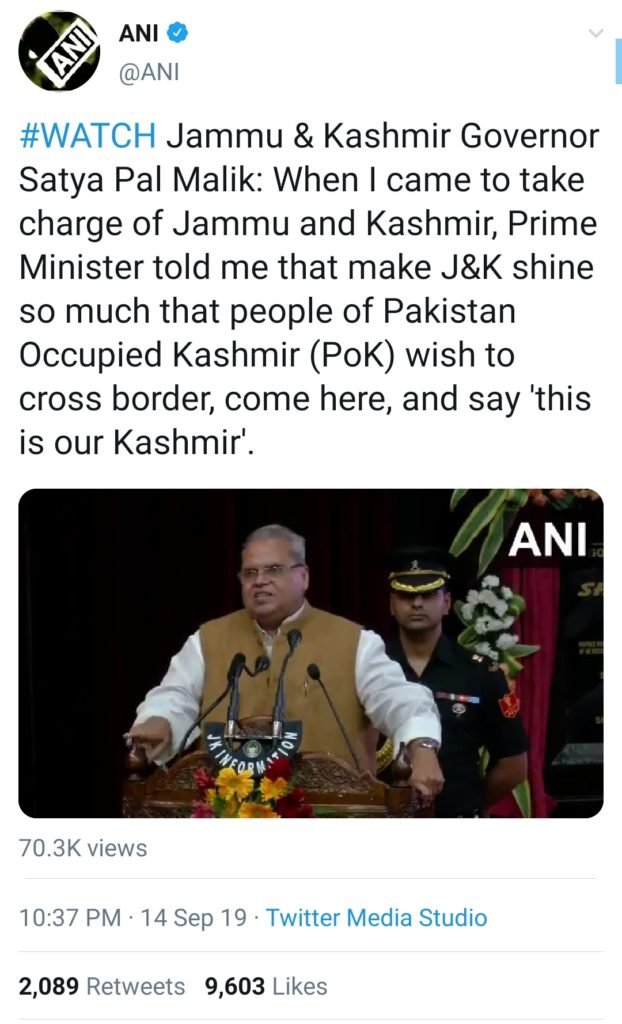
As the security situation improves, rehabilitate over a Million Kashmiri Hindu Pandits who are living the lives of refugees else where in India back in Kashmir.
Most important of all is to shut down all Madrasas setup in the Union Territory of Jammu and Kashmir and strictly review all the text books used for education in all the schools (including Government as well as Private Schools). Make sure children at young age are not indoctrinated by Radical Islamic teachings that preach hatred for non-Muslims to the young brains.
Follow us at:-
Twitter Handle: @communique_news
Parler Handle: @newscommuniquecom
Subscribe our : YouTube Channel https://www.youtube.com/channel/UCnKJQ3gFsRVWpvdjnntQoAA
Like our Facebook Page https://m.facebook.com/News-Communiquecom-103788531007438/
5,539 total views


